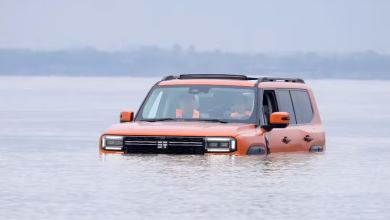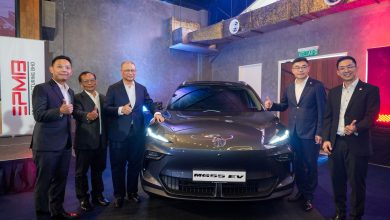Volkswagen Unveils A Mobile Charging Robot Prototype
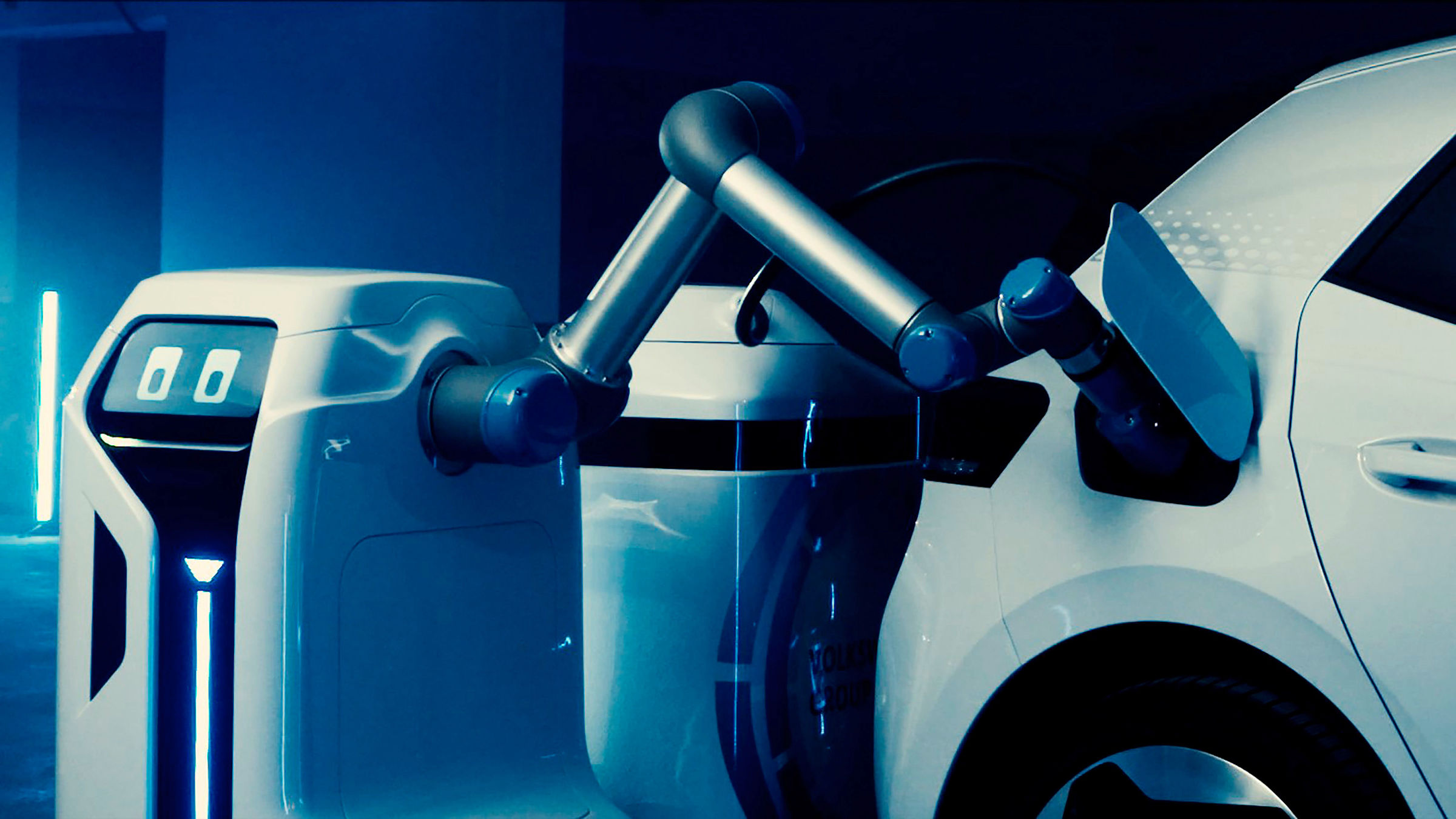
Volkswagen unveils a fully autonomous charging droid that may soon come to charge your EV in the near future.
The problems associated with having to charge an EV has always been one of the biggest obstacles for many to negotiate around when are deciding to jump on the electric car bandwagon. This is especially true for the vast majority of Malaysians who, while able and wanting such an innovative piece of technology, regularly park their cars in places with no convenient access to a power outlet, let alone a dedicated wall-box EV charger.
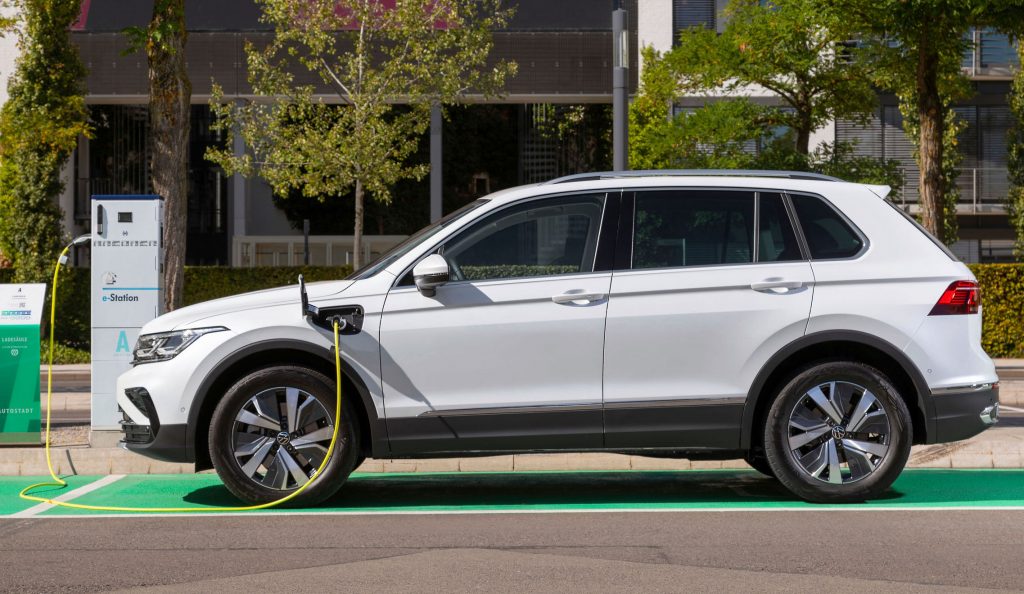
Happily however, this pesky charging issue may soon be solved thanks to VW’s newly unveiled mobile charging robot prototype. Developed by Volkswagen Group Components, this autonomous charging droid will supposedly operate entirely autonomously to charge up one’s EV. All one simply has to do is park your car, and call for it via an app or the VW Group’s Car-to-X communication system.
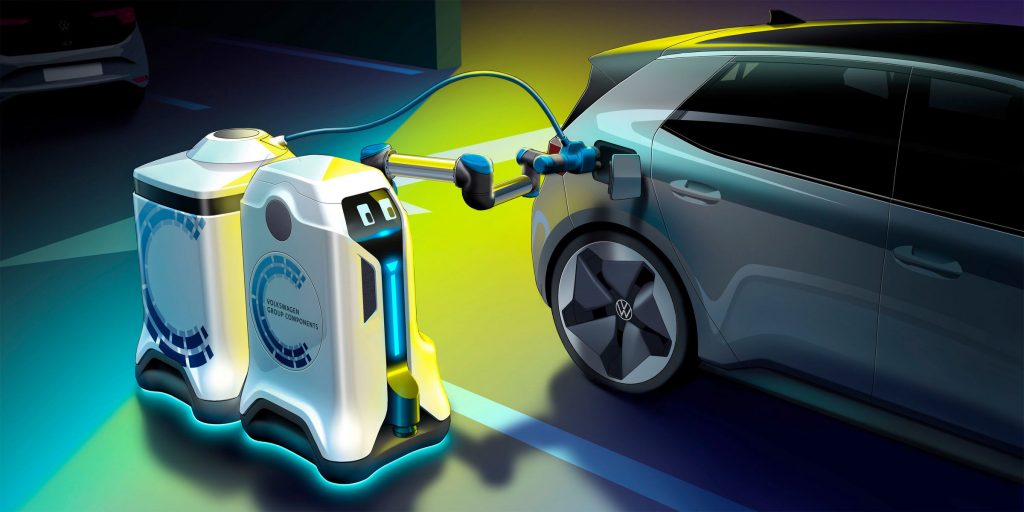
How it works is that once called upon, this little droid will independently steer a ‘mobile energy storage unit’ trailer to the VW that needs charging, open the EV’s charging socket flap by itself and then connect the plug from the trailer to initiate the charging process. Once the charging process is complete, the droid will then autonomously return to decouple the trailer, and then tow the depleted trailer back to the charging port to be recharged.
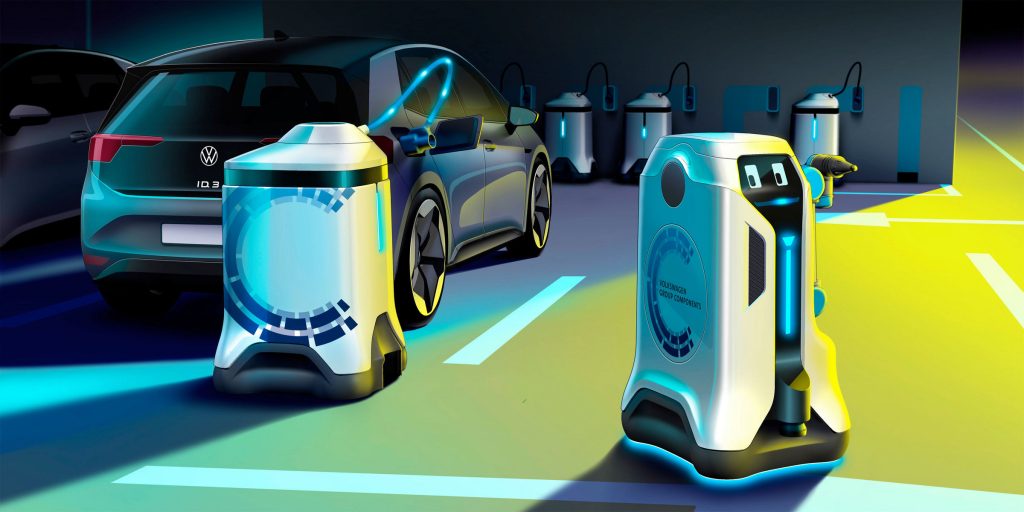
In simpler terms, think of this as the robotic equivalent of having a man bring a rechargeable battery pack to charge your EV in a carpark, and then recharging the battery pack once it finishes charging your car.
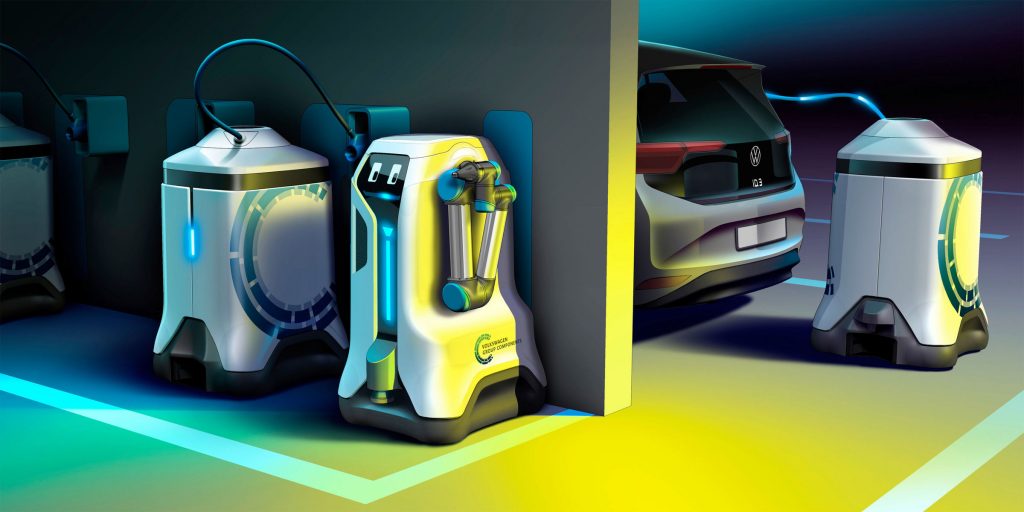
Using this analogy then, it is also easy to see that this one autonomous charging attendant can actually oversee several charging EVs in that one parking lot. Just as long as there are enough of those little battery trailers around the carpark in question.
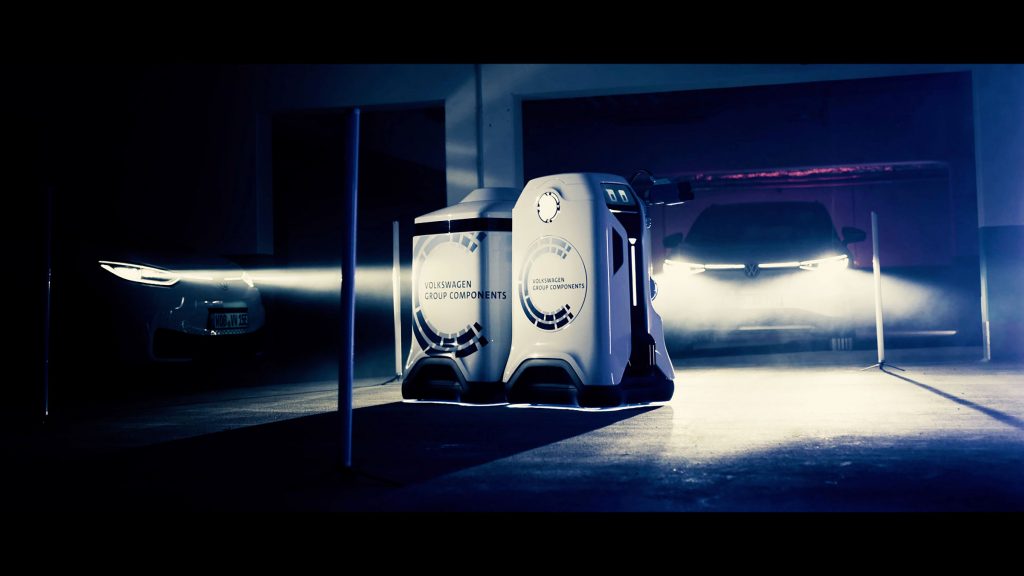
Volkswagen have yet to announce when exactly this charging robot will enter commercial use, having only just recently successfully reaching prototype status. The German auto giant however is currently banking on this, along with its more mundane yet practical flexible rapid DC charging stations, to further expand its ever-expanding charging infrastructure. So there is actually a higher chance than most visionary concepts for this to actually see the harsh light of commercial reality.
Then again, seeing as VW has yet to launch any of its electrified cars here in Malaysia, let alone its fully-electric ID model lineup, it will probably be a good long while before any of these cutesy yet highly convenient charging attendant droids make its way to Malaysian carparks.
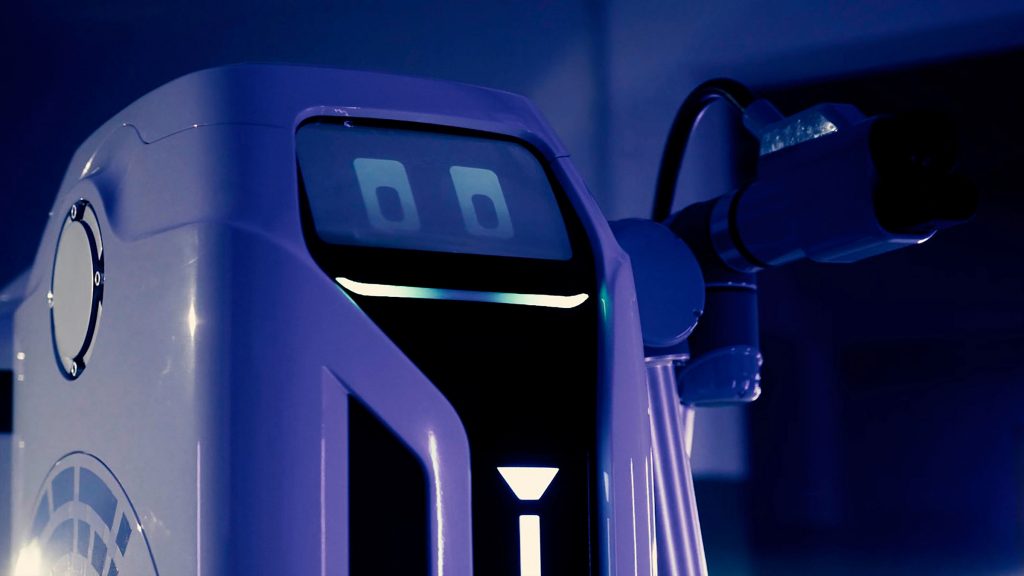
PRESS RELEASE: Volkswagen Group Components gives us a first glimpse of the prototypes of its mobile charging robot. This is one of the visionary charging concepts that Volkswagen hopes will expand the charging infrastructure over the next few years. Its task: fully autonomous charging of vehicles in restricted parking areas, like underground car parks. “A ubiquitous charging infrastructure is and remains a key factor in the success of electric mobility. Our charging robot is just one of several approaches, but is undoubtedly one of the most visionary,” explains Thomas Schmall, Volkswagen Group Components’ CEO.
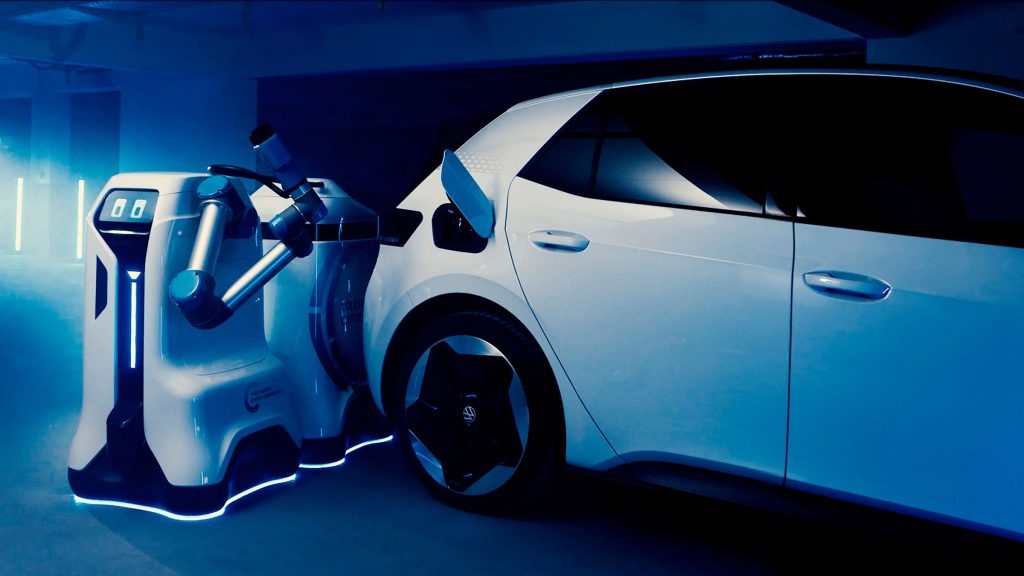
Fully autonomous charging
The charging robot – started via an app or Car-to-X communication – operates totally autonomously. It independently steers the vehicle to be charged and communicates with it: from opening the charging socket flap to connecting the plug and decoupling it. The entire charging process takes place without any human involvement whatsoever. To charge several vehicles at the same time, the mobile robot moves a trailer, essentially a mobile energy storage unit, to the vehicle, connects it up and then uses this energy storage unit to charge the battery of the electric vehicle. The energy storage unit stays with the vehicle during the charging process. In the meantime, the robot charges other electric vehicles. Once the charging service has ended, the robot independently collects the mobile energy storage unit and takes it back to the central charging station.
According to Thomas Schmall, CEO of Volkswagen Group Components: “Setting up an efficient charging infrastructure for the future is a central task that challenges the entire sector. We are developing solutions to help avoid costly stand-alone measures. The mobile charging robot and our flexible quick-charging station are just two of these solutions.” The business unit is currently working on a complete DC charging family. The flexible quick-charging station will be launched onto the market in early 2021. For several weeks now, the DC wallbox has been trialled at different company’s German production sites. The mobile charging robot has successfully reached prototype status and will now be comprehensively further developed. One of the prerequisites for market maturity is Car-to-X communication to facilitate the autonomous charging process.
In view of the crucial importance of this issue, in future Volkswagen Group Components will be amongst other things responsible for all Volkswagen Group charging activities and charging systems. The intention is to integrate the charging robot into an overall concept that will focus on the long-term success of electric mobility, and thus the electrification of transport. “Establishing a charging infrastructure is a fundamental prerequisite for this. But it needs to be demand-led and efficient,” continues Schmall. “Our developments do not just focus on customers’ needs and the technical prerequisites of electric vehicles. They also consider the economical possibilities they offer potential partners.” They enable the operators of parking bays and underground car parks to quickly and simply “electrify” every parking space using the mobile charging robot. This reduces any construction work needed, at the same time reducing the potential cost.

